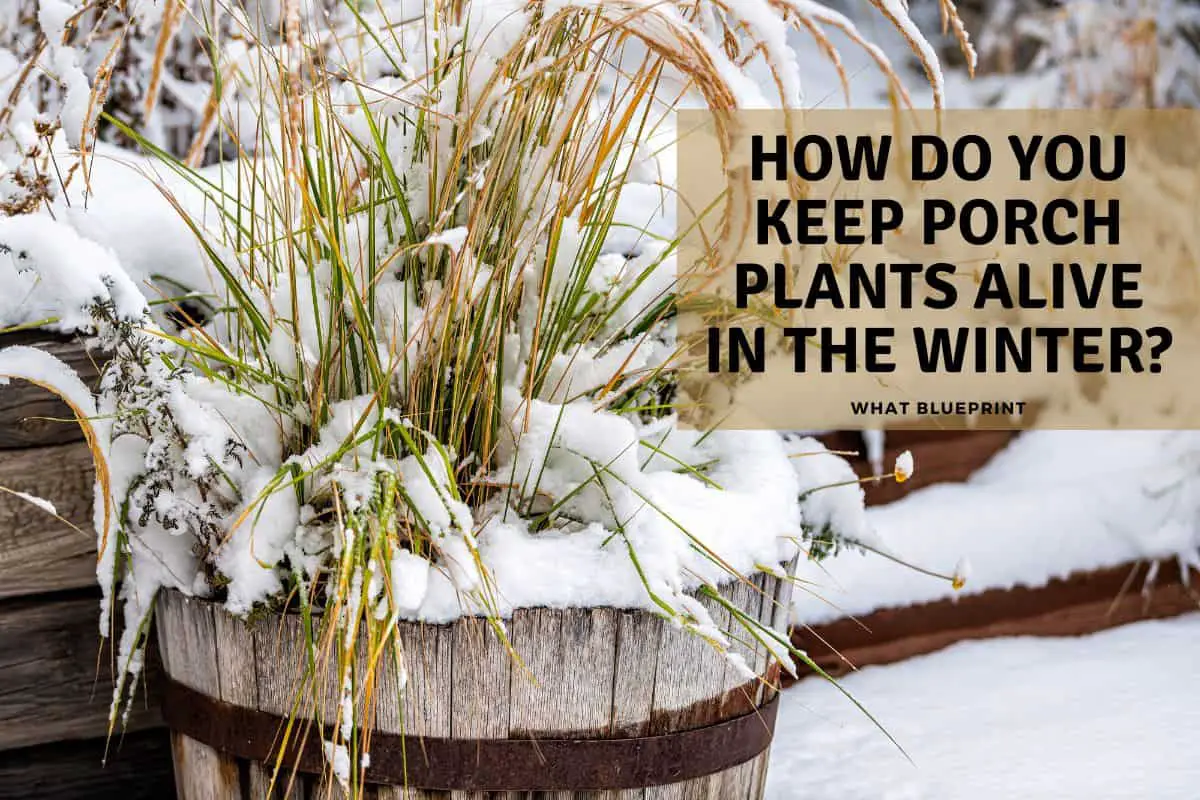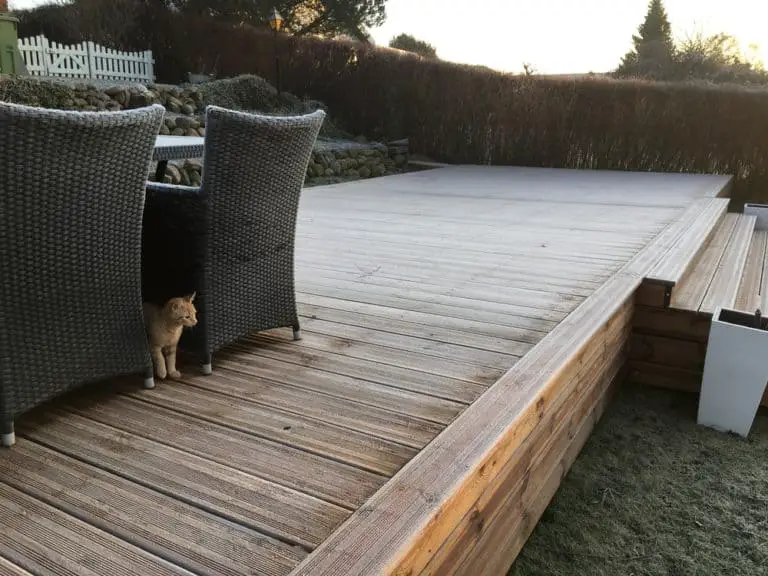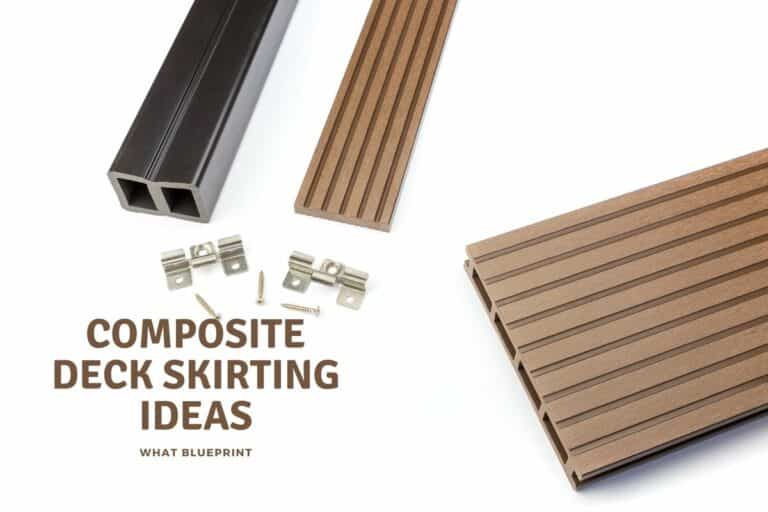How Do You Keep Porch Plants Alive In The Winter?
I was recently looking out of my window at my neighbor’s porch plants and saw how beautiful and green they were during the wintertime, and I wondered how he gets them so beautiful and healthy-looking? So I started investigating and researching how you keep porch plants alive in winter.
Porch plants may need additional attention during winter as temperatures drop. Sheltering with burlap, plastic greenhouses, hay, blankets even cardboard can help protect plants from frosts. Large thick pots helps prevent soil freezing and bringing sensitive plants in the house helps protect them from the cold.
You can keep your porch plants alive in winter when you avoid exposing your plants to freezing and rapidly changing temperatures , and when planting your plants, you need to use a big pot to put your plants in, and the earlier you plant your plants in the spring the stronger they will be in the winter.
Keeping your porch plants alive in cold weather is tough, but from what I have learned from the experts, it is possible to keep your porch plants alive in the winter. According to my sources, I found that if you follow certain prevention methods and give your porch plants the care and the nutrition they need, they can still grow and thrive during the winter.
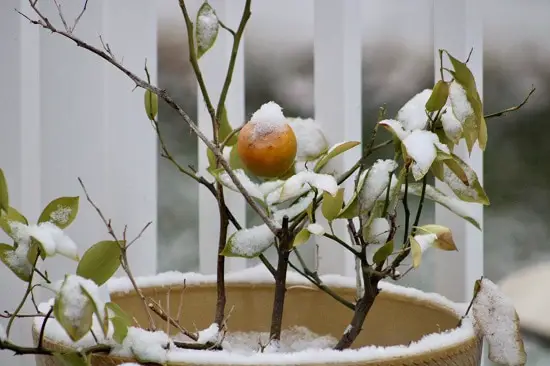
How Do You Protect Your Porch Plants From The Winter Cold?
Rapidly fluctuating temperatures (from hot to cold and back) can cause damage to the roots of the plants and may even result in the plant heaving out of the pot, avoid this by placing your pots on soil rather than on concrete surfaces, the main source of heat to your plant roots are the heat of the earth.
When pots are directly placed on concrete surfaces, the sun warms the concrete, which results in the temperatures elevating to the roots of your plants, following a drop in temperatures at night.
They can always be covered with plastic materials and row cover fabric for extra protection to block the cold from reaching the plants during the winter period. You cover the plants up and prevent the cold or the freeze from the winter from reaching your potted plants on the porch.
How To Choose The Correct Pot For Planting Your Porch Plants
Before selecting the appropriate pot for your porch plants, consider the type of soil your plants prefer. The darker the soil is, the more it absorbs heat. If the soil is too dark, the plants will dry up quickly.
On the other hand, lighter soil will freeze in the winter. Therefore, choose a pot with thick walls to reduce heat loss. You can group several pots together to provide better insulation. Straw bales and hay can also help.
Before selecting the proper pot for your porch plants, make sure to check the drainage hole in the pot. Although almost anything can be used for pots, it must be able to drain well and avoid drying out in direct sunlight.
If the pot does not have drainage holes, make sure to drill one good-sized hole per gallon of soil. If you do not have access to drill holes, purchase another pot to place the plants in.
The climate determines what type of pot will best suit your plant during the winter period. Untreated, porous pots such as terra cotta and ceramic are prone to breakage and tend to crack with freezing temperatures.
However, experts suggest that treating the interior of these pots with pool paint limits moisture from entering the pot’s surface and prevents cracks from forming because of the freezing temperatures.
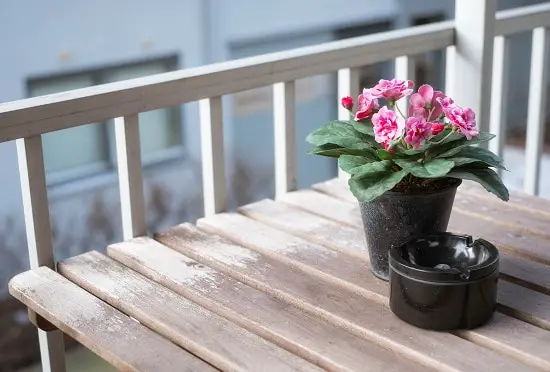
How Does The Size Of The Pot Affect The Plant In Winter?
A bigger pot is always the better option when considering which pot to choose. The larger the volume of the pot is, the better the growth will be; also, the soil in a larger pot tends to insulate the roots of the plant better than a smaller pot would.
Also, a smaller pot will freeze more than a larger pot would. According to plant experts, smaller pots also dries out faster than larger pots, which also absorb the water from the roots of your plants.
If you’re growing your plants outside, the size of their pots will affect their success. Ideally, you should use a pot that is at least two quarts in capacity.
If you don’t want to use the same pot for more than one plant, consider choosing a pot that is half as large. But if you live in a very cold climate, you’ll probably want to use a larger pot than normal.
A good tip is to choose a pot with drainage holes. Plants can’t grow in pots that have too many drainage holes. If you want a thriving plant, pick a pot with drainage holes. If you don’t want to worry about excess moisture, cover the drainage holes with a sheet of burlap or cheesecloth.
Pot sizes can make or break the success of your gardening efforts. Pot sizes should be chosen accordingly. A small pot can lead to root problems. A larger pot will increase the risk of a poor plant’s death.
Smaller pots are also likely to experience water stress. If you have chronic overwatering problems, consider using unglazed terra cotta pots. Unglazed clay pots wick moisture out of the soil faster than glazed ones.
The Best Time To Plant Your Plants To Prepare For Winter
According to experts that I have spoken to, it’s recommended that the sooner you plant your plants into their pot in the summer, the better. It provides your plant with enough time for the roots to harden and for the plant roots to mature.
It also helps the plant get stronger to be more prepared for the cold or freezing temperatures of the winter. The healthier and the stronger the plant’s roots are, the better the plant will tolerate the winter stress and the cold.
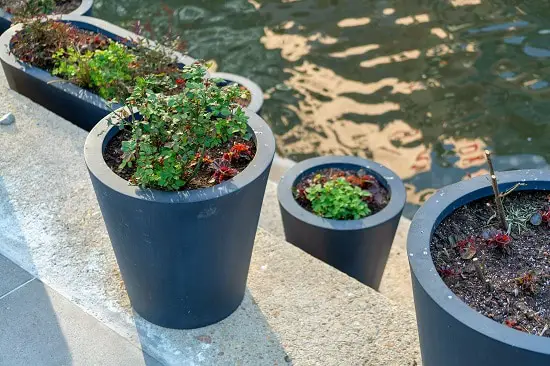
Best Time To Winterize Potted Plants On The Patio
Whichever method you use to protect your potted plants against the cold of the winter should be done about a week or so before the cold frost is expected, and it all depends on the type of plant that has been planted.
So experts always recommend that you research the type of weather conditions the plants are prone to before planting them in pots for your porch; even some outdoor plants may suffer the cold conditions more than others, and their needs may differ.
In the winter, porch plants need a little acclimatization to survive. Bringing them inside should be done before hard frosts, or at night when temperatures are below 50 degrees Fahrenheit.
Once indoors, they will need to acclimatize to the new light levels, temperature, and environmental conditions. This process should be done gradually, allowing the plants some time to adjust to the new conditions.
To protect the roots of your plants, move them to a warmer spot. A south-facing wall is ideal, as it will receive less sun. If possible, put them in hanging baskets to provide some extra protection.
Also, use saucers to collect water, since hanging baskets tend to dry out faster. During the winter, you can cover the pots with plastic sheeting to prevent soil expansion. The last thing you want is standing water on the bottom of your pots.
Can you Leave Plants on The Porch During Winter?
If you’ve left your plants out during the fall and winter, they should be fine. However, you’ll want to keep an eye on them and make sure they’re properly watered. Before the ground freezes, water deeply so the soil can retain warmth.
Do this once a week or two leading up to winter, or as often as you need to. You’ll want to make sure that the soil is well insulated from cold weather, otherwise, the plant may die due to frost.
If you have plants that require bright light, you’ll want to move them to a more sunny location. Place plants near windows so they receive bright sunlight, but remember that they’ll still be cold at night.
We have a full article on best potted plants for shaded areas here.
As a rule, houseplants don’t grow much in the winter. That means they won’t need as much water, so make sure your plant can drain excess moisture. Otherwise, you risk causing root rot.
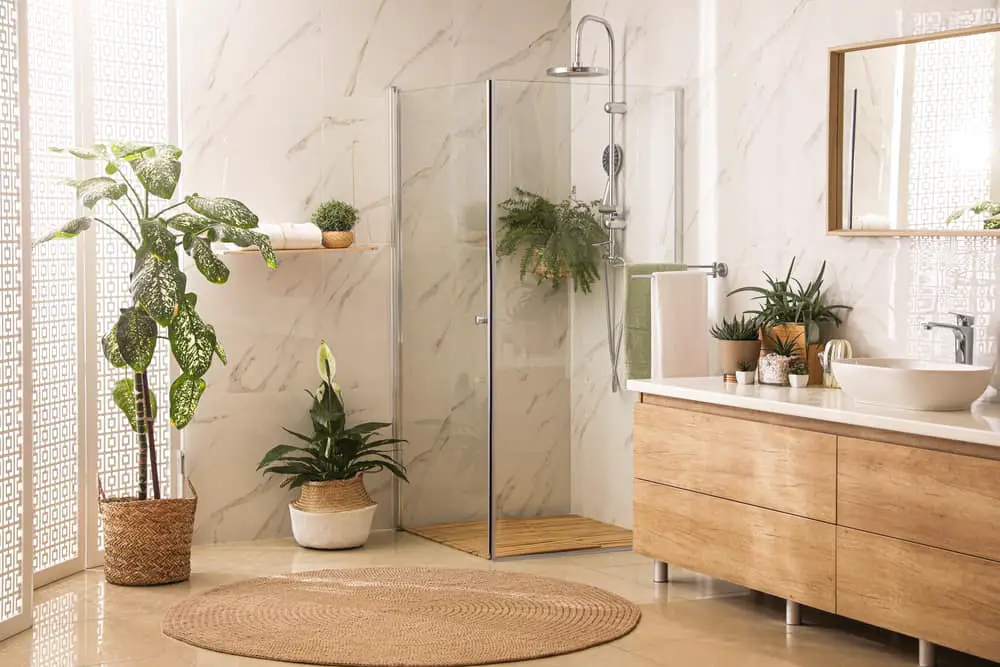
Sheltering And Covering Potted Plants On The Porch
It’s not always that the plants suffer from the lower temperatures, but they are likely to suffer from the rapid swings between the warmer and colder temperatures that can cause stress to the plants during the freezing temperatures.
If you can provide shelter or coverage to insulate your potted plants against the temperature swings, the plants will have a better chance of survival during those temperature drops
Considering clustering several of the potted plants together in a sheltered part of the porch, you might consider covering up for the plant’s protection against the cold and also against winds that can cause the temperatures to drop.
In addition to clustering the potted plants together, you can also try covering them with a tarp or straw over and above the plastic or the row cover fabric.
Other Methods For Covering Potted Plants On The Porch
There are several options when it comes to covering plants for the winter. One option is to wrap them with burlap.
- Burlap is an excellent insulator, but it may pull away from the pot during high winter precipitation, so be sure to wrap it as tightly as possible.
- Another option is to use tarps or blankets to protect plants from freezing temperatures. However, be aware that heavy coverings can break plant stems and allow the cold to get through.
- If you can’t get rid of the blankets before the cold weather arrives, consider using stakes around the perimeter.
- If you cannot remove the blankets, you can place cardboard boxes over your plant pots. Make sure the boxes do not touch the foliage and then remove them in the morning when the air is warm enough.
- You can also use a burlap or sheet to drape over a chair to protect a plant from the cold.
- Milk jugs can also be used as frost protection. You can also use larger plant pots to protect them from freezing.
Things To Consider And To Remember When Covering Porch Plants
Something to think about and to keep in mind is that sunlight is still important for the plant’s progress during the winter, so when covering the potted plants, make sure they are not covered so that the sun is also blocked. Also the plants will still be needed to be watered even though they are being sheltered and covered.
Keeping outdoor plants alive during the winter periods usually means taking extra care and measures to keep them looking beautiful; they still need to be regularly watered so they can keep growing.
Insulating the watered soil also helps retain warmth and moisture for the plants, and covering and enclosing the potted plants is also important to prevent cold and frost from reaching the plants on the porch.
We have loads of information and articles on plants for outdoor spaces, while a search will help checking out the articles linked below is also a good way to start.
- Best potted plants for a shaded porch
- best succulents for balconies
- low maintenance plants for balconies
- 10 tall plants for balconies
- low maintenance plants for decks
- how to keep porch plants alive in winter
Conclusion
If you use the proper materials when planting plants for the porch, they have a better chance of surviving the winter. Experts always advise using the correct size of pot for planting your plants combined with placing your pot plant on a soil surface rather than on a concrete surface.
You can also cover your pots with plastic or with a row cover for extra protection against the cold, and also watering and nurturing your porch plants during the winter is also important for the plants to keep looking their healthiest and best.
When the weather turns cold, there are several ways to protect your plant from the winter months. You can water thoroughly before the ground freezes. Wet soil retains warmth better than dry soil.
Dry soil can freeze on cold nights, killing your plant at the root level. Make sure to keep the soil moist and prevent frost damage by watering thoroughly before the ground freezes. Make sure to check on your plant’s water level regularly to avoid damaging it.
If all else fails or you live in a particularly cold place with lots of frosts, then you can bring them indoors to spend winter, and Christmas! with you.
References
- https://www.hgtv.com/outdoors/gardens/garden-styles-and-types/the-cold-hard-facts-on-protecting-potted-plants
- https://www.youtube.com/watch?v=pIn_UPtALaM
- https://www.youtube.com/watch?v=elahwskKNMw
- https://www.gardeningknowhow.com/houseplants/hpgen/keeping-plants-alive-in-winter.htm
- https://food52.com/blog/24784-how-to-keep-plants-alive-in-winter

